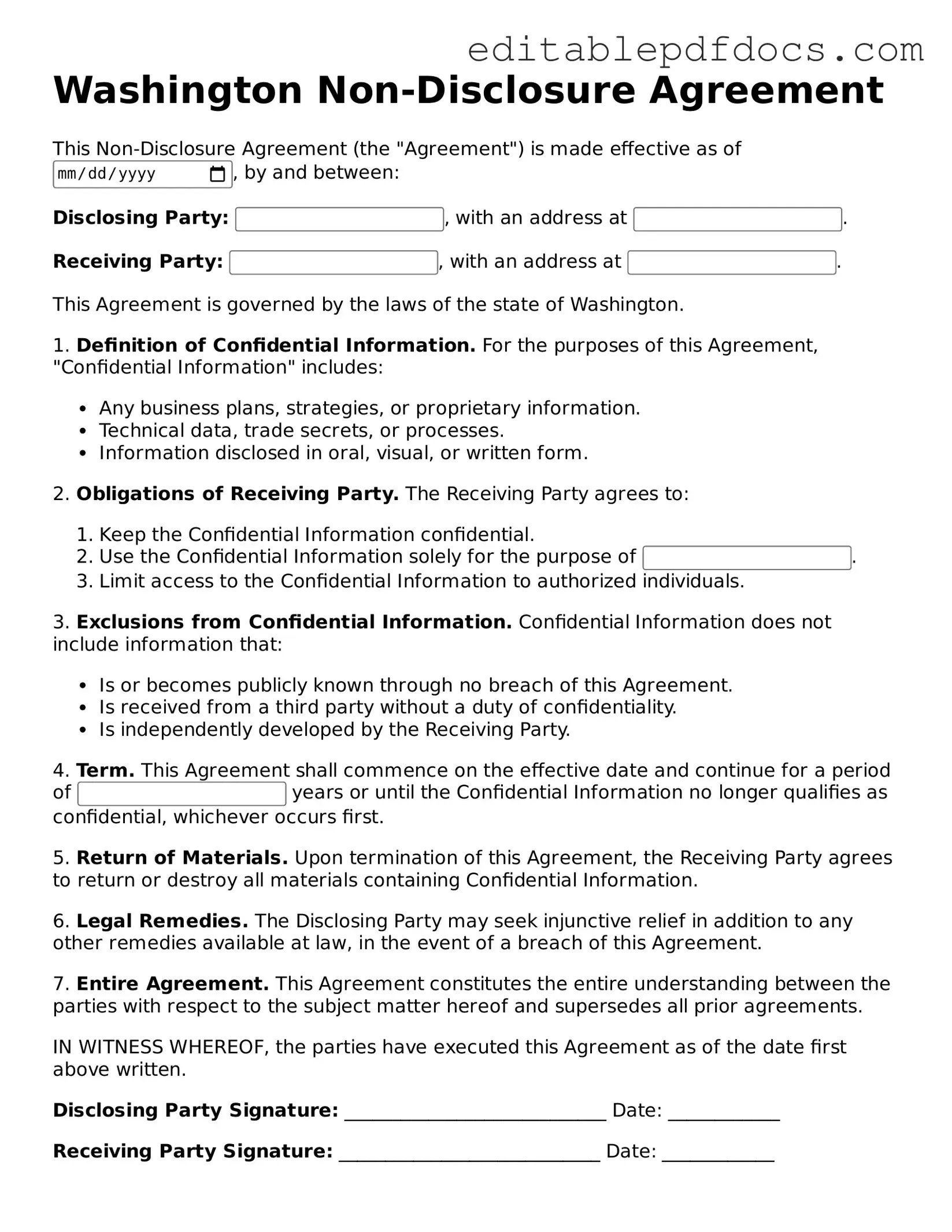Filling out a Non-disclosure Agreement (NDA) can seem straightforward, yet many individuals make common mistakes that can lead to complications later on. One frequent error occurs when the parties involved do not clearly identify themselves. It is essential to include full names and contact information for all parties to avoid confusion. Without this clarity, enforcing the agreement may become problematic.
Another common mistake is failing to define the confidential information accurately. A vague description can lead to misunderstandings about what information is protected. To prevent this, it is crucial to specify the types of information that the NDA covers, such as trade secrets, business plans, or proprietary data.
Some individuals overlook the duration of confidentiality. An NDA should specify how long the information must remain confidential. If this timeframe is not included, it could lead to disputes about when the obligation ends. Clarity in this area is vital for both parties to understand their responsibilities.
Additionally, people often neglect to include the purpose of sharing the confidential information. Without a stated purpose, the agreement may lack context, which can lead to misuse of the information. It is important to outline why the information is being shared and how it is intended to be used.
Another mistake is not considering the governing law. Each state has its own laws regarding NDAs, and failing to specify which state's laws will govern the agreement can create legal uncertainties. Including a governing law clause helps clarify which jurisdiction will apply in case of a dispute.
Some individuals may also forget to include any exceptions to confidentiality. For example, information that is already public or that is disclosed by a third party without a breach of the NDA should not be subject to confidentiality. Clearly outlining these exceptions helps both parties understand their rights and obligations.
Inadequate signatures can also pose problems. Both parties must sign the NDA for it to be enforceable. Sometimes, one party assumes that an email exchange suffices, but this is not legally binding. Ensuring that both parties physically sign the document, or use a recognized electronic signature method, is essential.
People sometimes misinterpret the consequences of breaching the NDA. It is important to include provisions regarding potential remedies or penalties for breach. This clarity can deter violations and provide a clear course of action if a breach occurs.
Finally, individuals may fail to seek legal advice before finalizing the NDA. Consulting with a legal professional can help identify potential pitfalls and ensure that the agreement meets the specific needs of both parties. This step can save time and resources in the long run.
By being aware of these common mistakes, individuals can approach the process of filling out a Washington Non-disclosure Agreement with greater confidence and clarity. Taking the time to carefully review and address these issues can lead to a more effective and enforceable agreement.
